17 colourful Orthodox churches of Podlasie + bonus
Driving around Podlasie, it is hard not to notice the beautiful, colourful, wooden Orthodox churches. We were puzzled by the meaning of the colours, but after talking to the lovely lady who opened the doors of the church in Puchły for us, we already knew the answer.
Blue churches are dedicated to the Virgin Mary or Archangel Michael,
green to the Holy Spirit,
yellow to Christ or the apostles
and brown to martyrs.
We recently spent a few days in Podlasie, exploring the Orthodox churches north of Bielsk Podlaski.
Podlasie is primarily home to Orthodox Christians, but there are also Catholic churches, mosques and synagogues. Orthodox churches are still in use, they are also very well looked after. The approach to them is very pragmatic, sometimes the church as a building is no longer sufficient in a given place, so it is disassembled and transported somewhere else, and a new one is built in the original place
Interestingly, it is not difficult to find such a wandering Orthodox church. And we have also met some.
Below you will see an overview of temples that caught our eye. These are big parish churches, small Orthodox churches and even cemetery chapels. What they have in common is that they are spectacular and wooden (with one exception). We wrote a few sentences about each of the objects.
At the very end, a reward for the persistent, that is a map of our two-day trip along the route of the Orthodox Church.
Interesting fact, our first post on this blog was about Podlasie (attention, it is in Polish)
Index
Orthodox church of the Elevation of the Holy Cross in Kozany
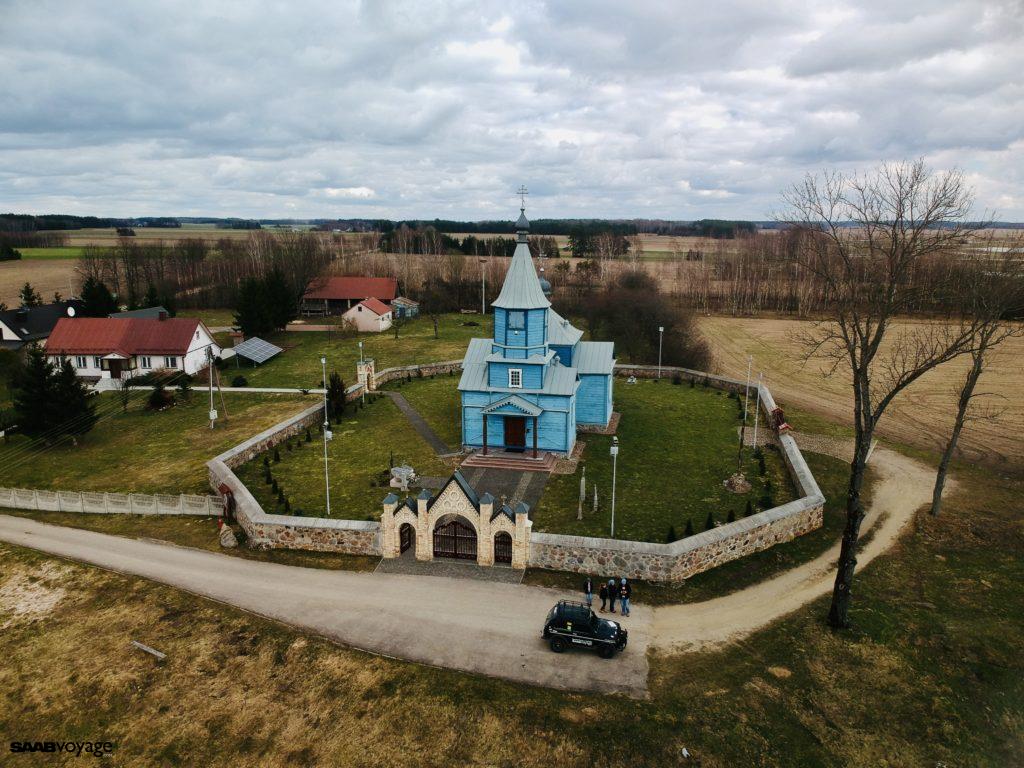
The church dates from 1883. It is the second church in this place. The earlier one, from 1621, was demolished (on the way it was changed from the Orthodox to the Uniate church) because of its bad technical condition, while the obtained material was used to build an Orthodox church in Ryboly. Smart!
Inside is the icon of the Mother of God from the first half of the 17th century, locally acclaimed as miracle-working.
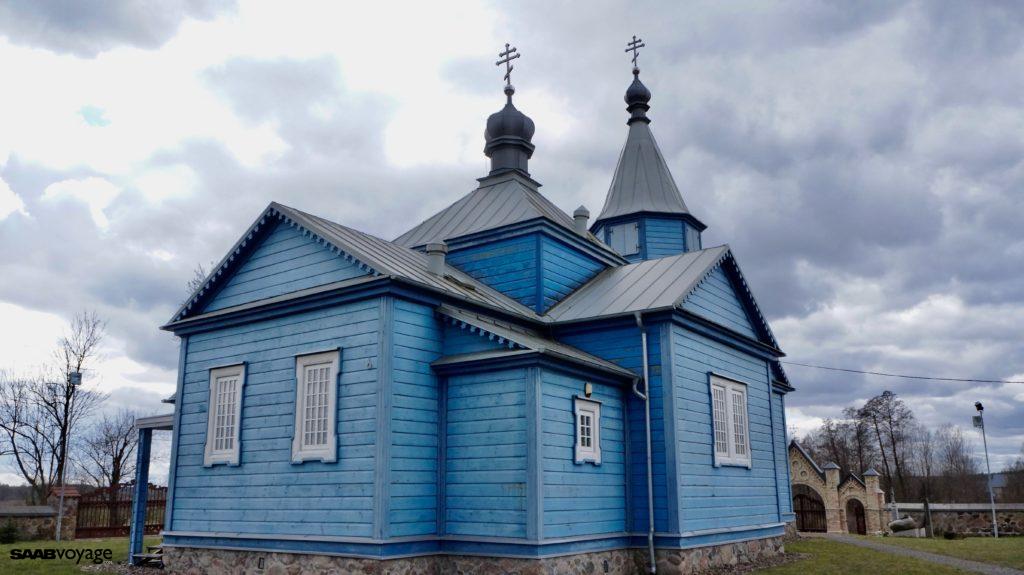
St. George Church in Ryboły
There are two Orthodox churches in Ryboly: a brick church of St. Kosma and Damian and a wooden cemetery church of St. George. The brick church was built at the end of the 19th century, but the material from the demolished old wooden building, as well as material from Kozany, was used to build the cemetery church, which we present here.
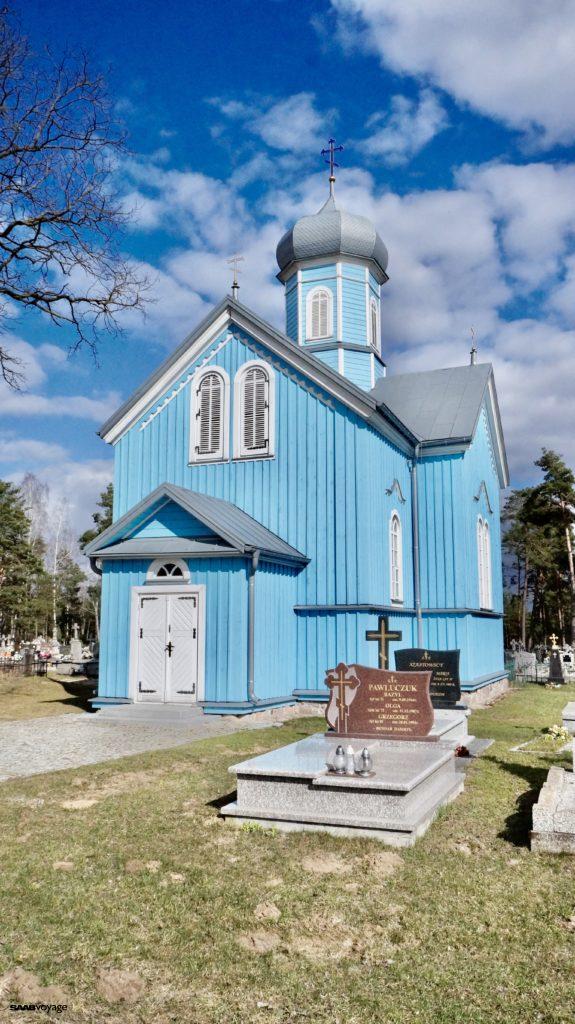
Orthodox church of St. John the Theologian in Pawły
Another cemetery church, you will find it on the side behind the village.
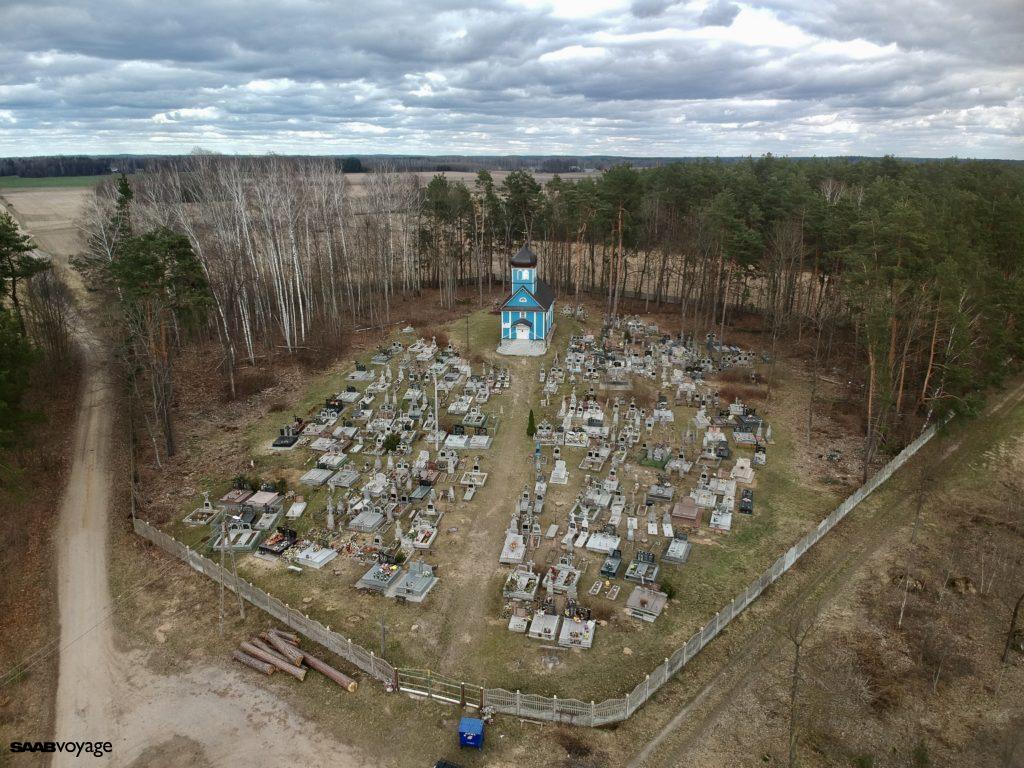
Chapel of Saints Cyril and Methodius in Kaniuki
The chapel, which was built in a former shop building , at the end of the 20th century. It’s not a joke!
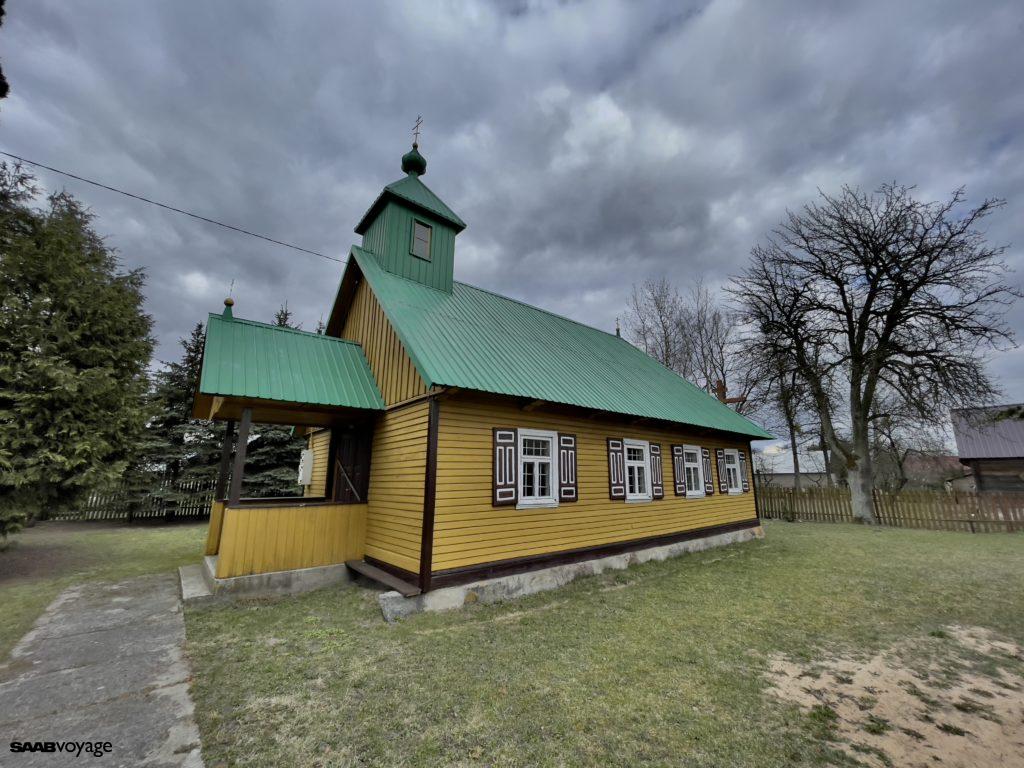
Chapel of St. John the Theologian in Chrabołowski Las
Driving through the forest, we spotted an “onion” among the trees. We turned into a side road and found this little church.
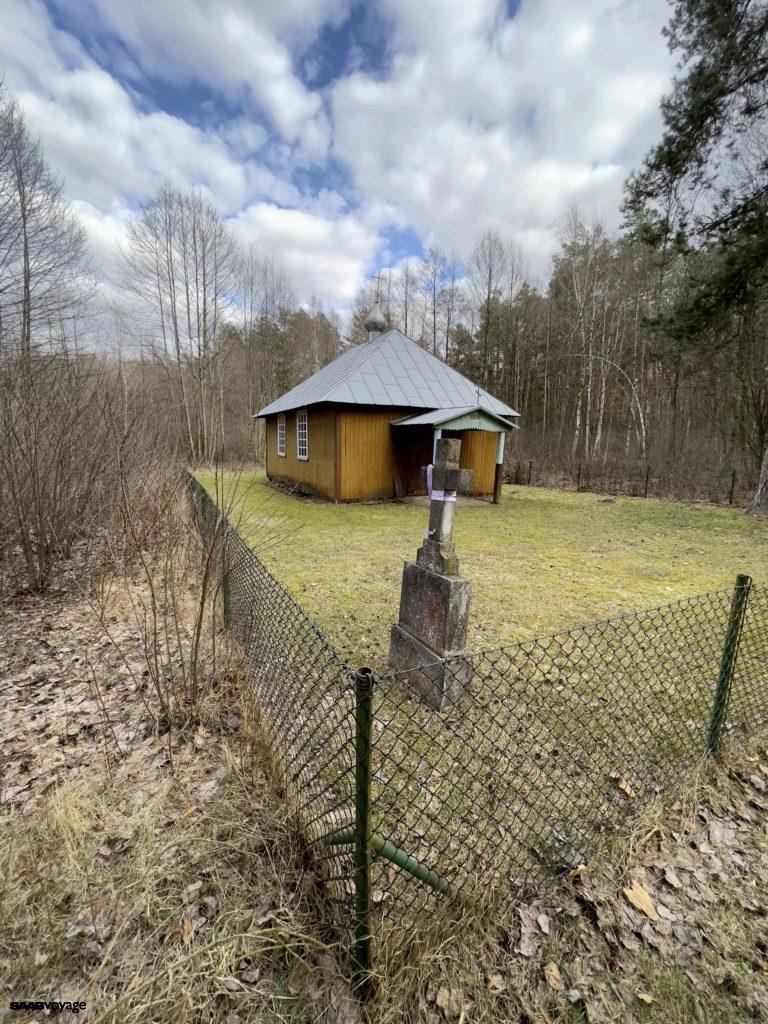
Orthodox Church of Saints Peter and Paul in Rajsk
An Orthodox church with a doubly hard history. In 1942 the village of Rajsk was pacified, the Germans shot 149 people, burnt houses and the church. The church shown in the photo was built in 1912 in Poturzyn near Tomaszów Lubelski, about 300km from Rajsk. After the displacement of Orthodox inhabitants in 1947 (Operation “Vistula”), the church was closed and used as a warehouse.
In 1962 it was transported to Rajsk, reconstructed, rebuilt and refreshed and has been serving the worshippers since 1971.
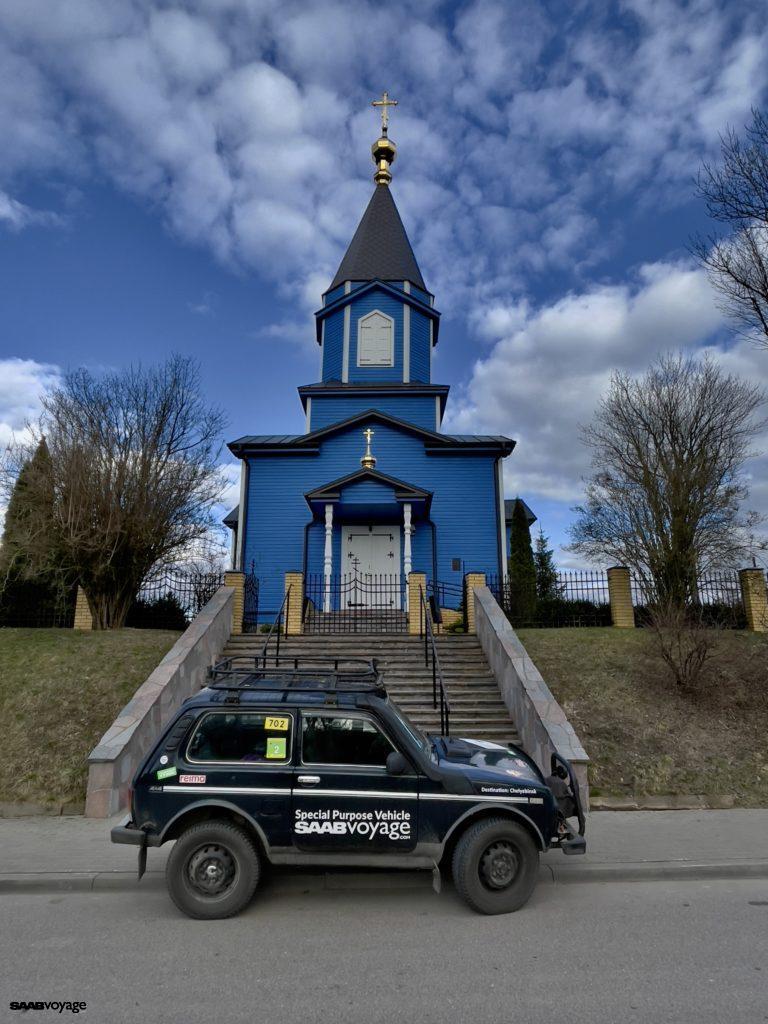
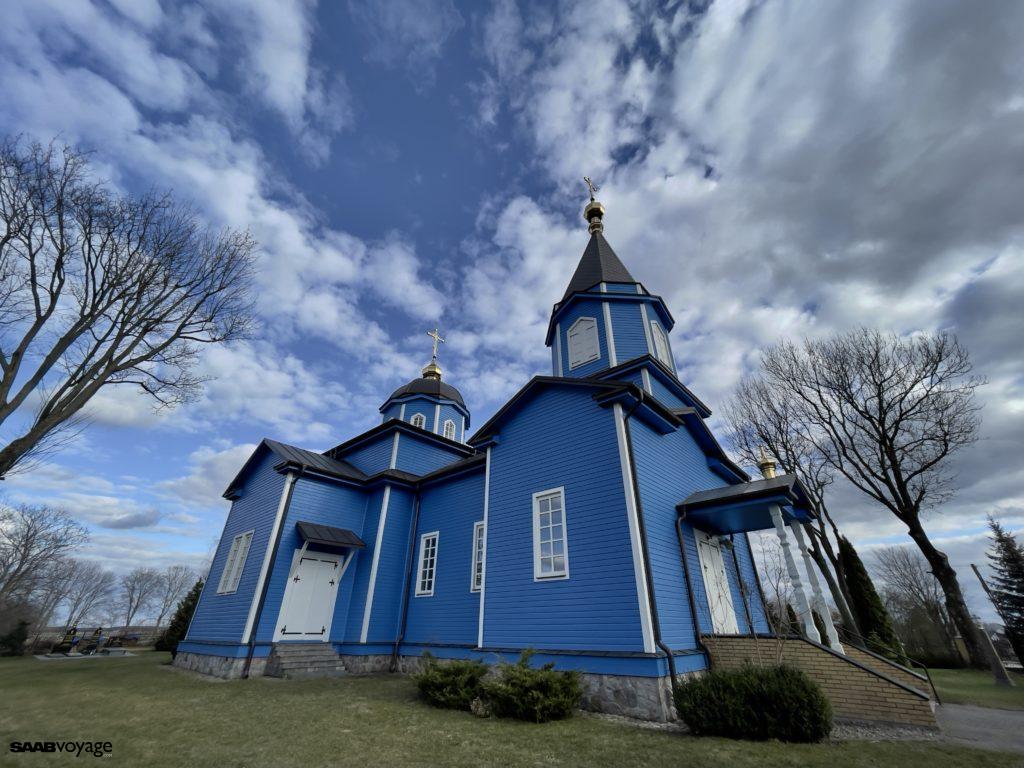
Orthodox church of the Transfiguration of Christ in Ploski
The late 18th century church was brown in older photos on the internet, but now has a restored roof and a luscious blue colour.
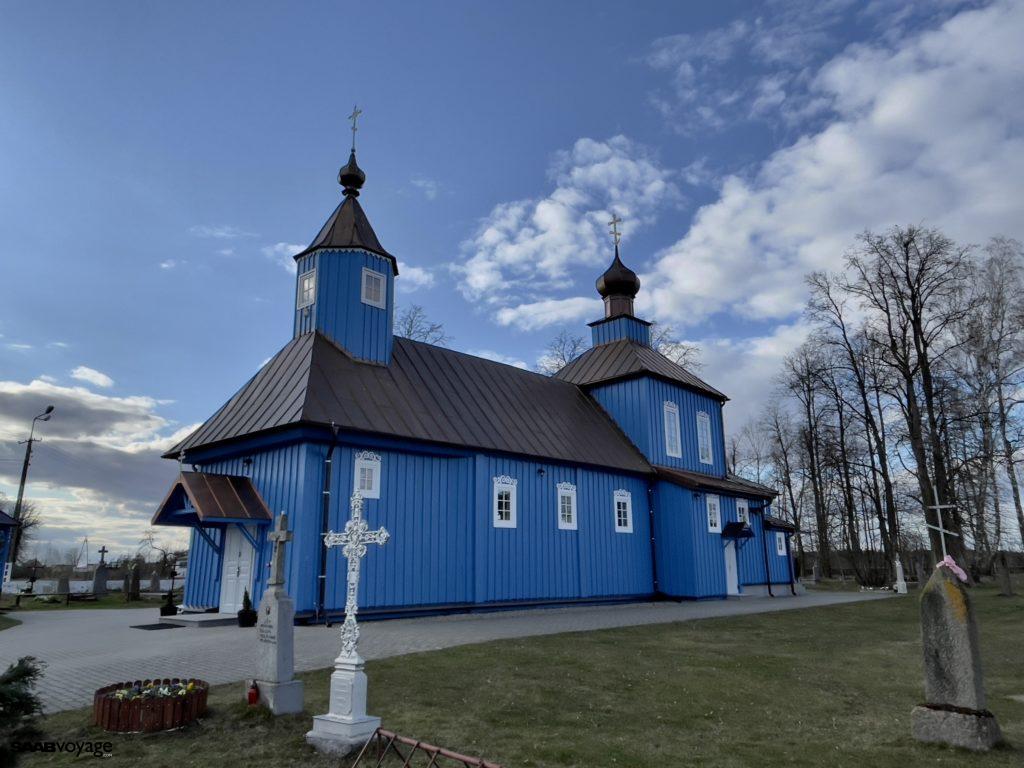
Cerkiew Św. Mikołaja w Koźlikach
Another “wandering” temple. First it was built in XVIII century in Wieżanka, in the middle of XIX century it was moved to Klejniki and at the beginning of XX century it found its final place.
The church is situated in a very interesting place, on the aside, next to the Narew floodplain.
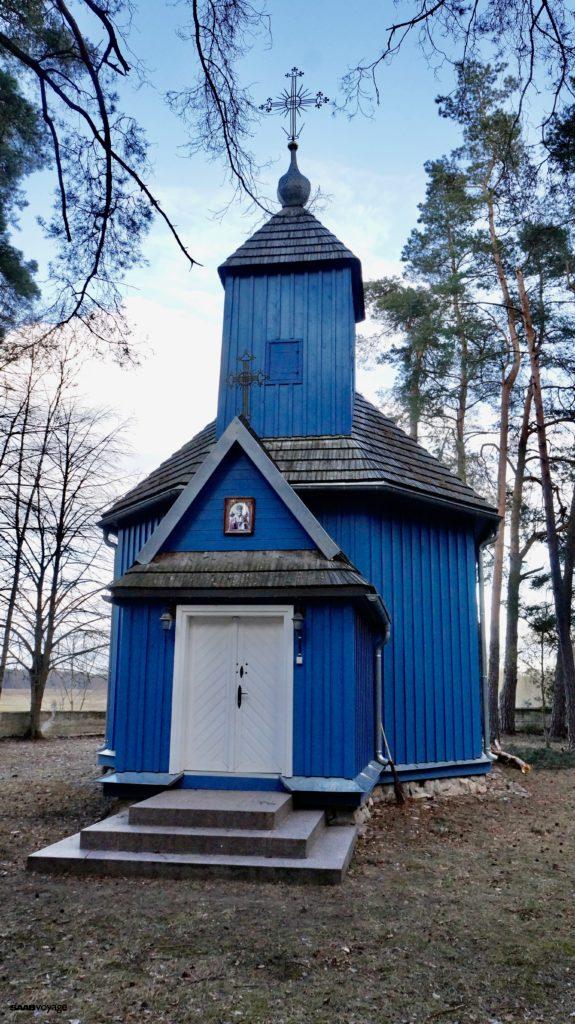
Dormition of the Blessed Virgin Mary Church in Dubiny
The church was built at the end of the 19th century (consecrated in 1872), on the site of the old one, about which you will read later.
As a result of the church’s name, the feast of the Dormition of the Mother of God is celebrated with particular solemnity in Dubiny.
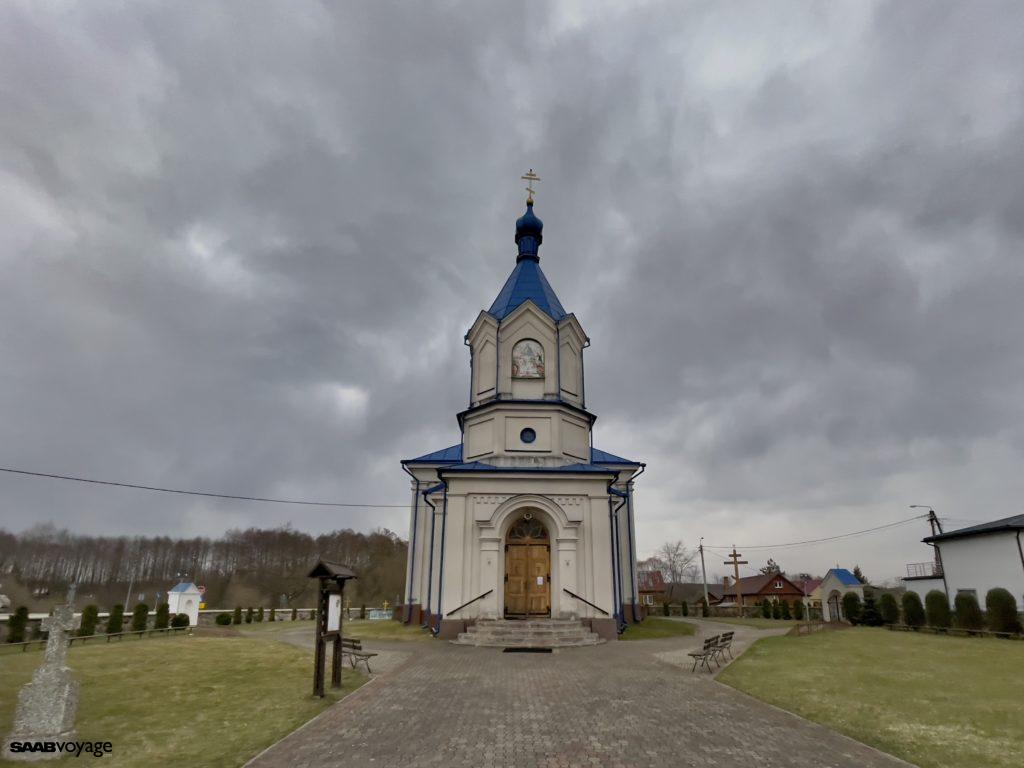
Orthodox church of the Birth of the Virgin Mary in Rogacze
The first Orthodox church in Rogacze was built at the turn of the 16th and 17th centuries, but it fell apart due to old age. Another church was built in the first half of the 18th century. It was around that time that the image of St. Anthony appeared on a tree and he became the patron saint of the new church. Anthony – a universal name, in Uniate times it was St Anthony of Padua, but after the return to Orthodoxy, Anthony remained, only the saint changed – Anthony Pechersky.
In 1872 the church burned down (the icon of St. Anthony survived because it was undergoing restoration at that time). The parish in Rogacze bought the old church from Dubiny. And this church still stands there today. Unfortunately, the icon of St Anthony was lost during the time of the Exile (link to polish Wikipedia, there’s no article about it in English), and now there is a copy of it in the iconostasis.
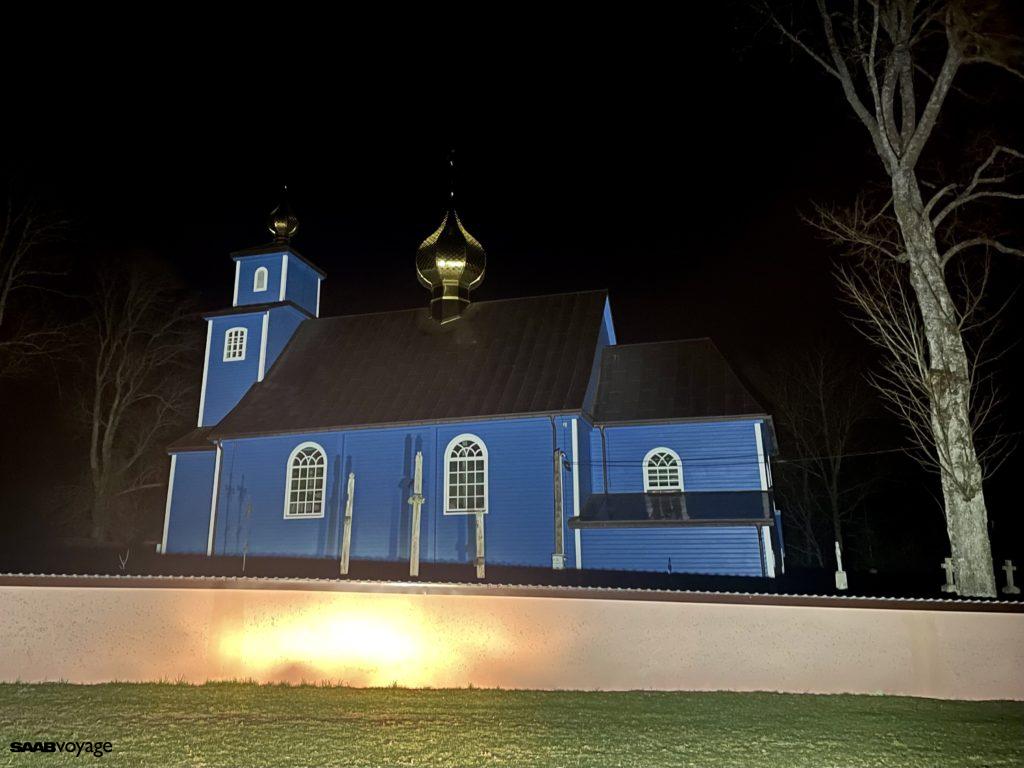
Orthodox church of the Dormition of the Mother of God in Kleszczele
This is the only brick church on our list. But not without reason. Firstly, wood from the demolished wooden church of St. Sigismund was used to build it. Secondly, in 1966, under the impression of the Second Vatican Council, ecumenical services were held in the church in Kleszczele and in the local church of St. Sigismund (built at the beginning of the 20th century), which was a unique situation in the region.
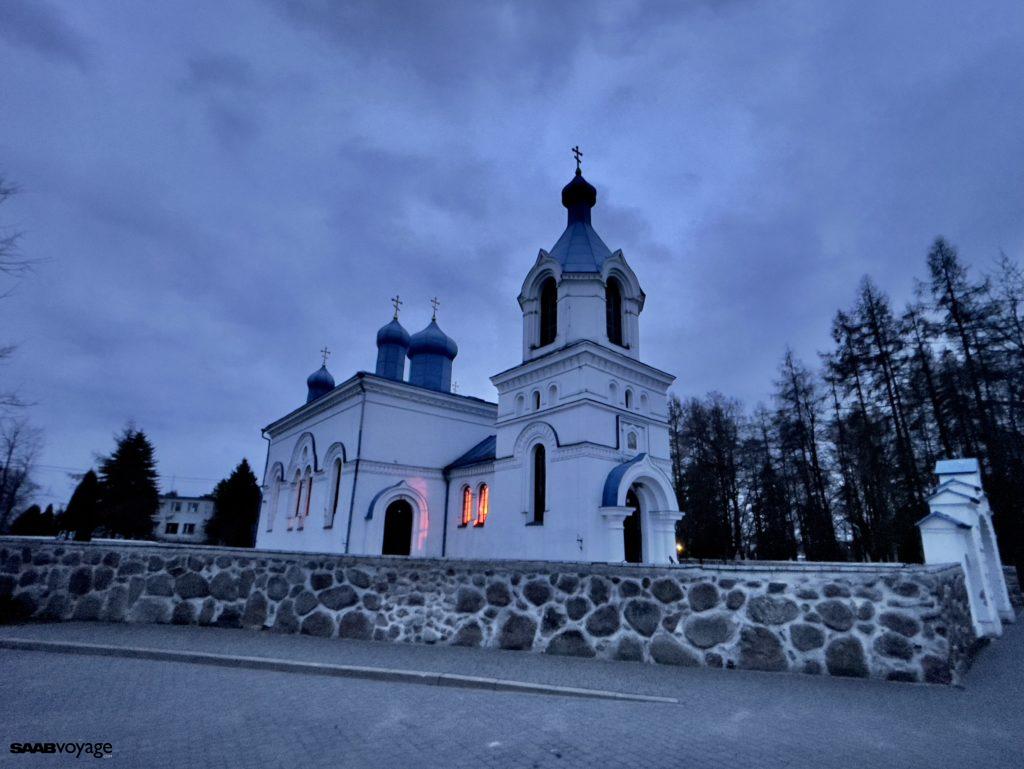
Orthodox church of the Protection of the Mother of God in Dubicze Cerkiewne
The first church was founded in 1593, which is confirmed by the privilege of Sigismund II Augustus. The present church (on the foundations of the previous one from 1729, burnt in 1941), was built in the years 1946-1954. Intense blue 🙂
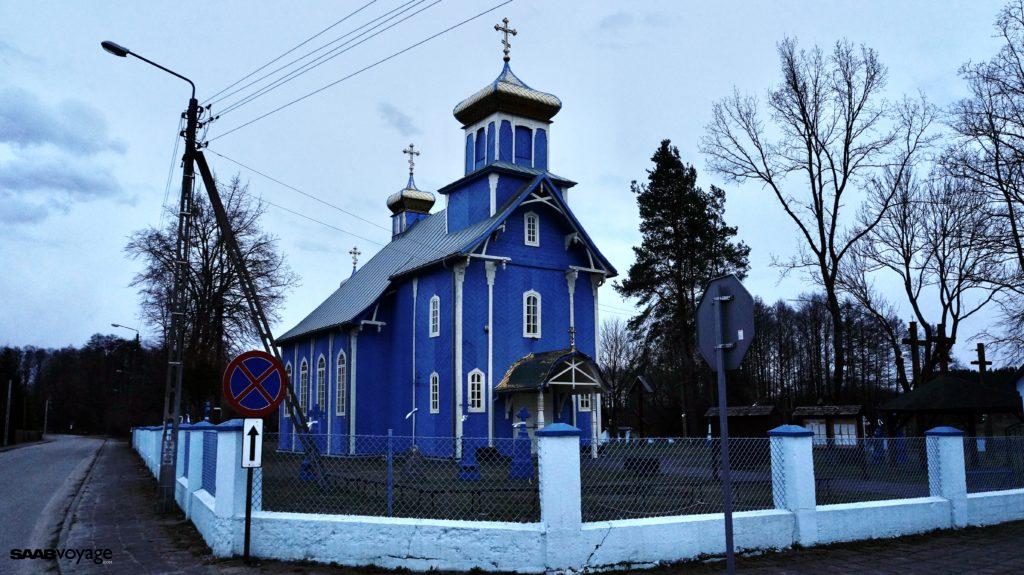
Opposite there is an interesting building – an old school. Currently, it houses the Chamber of Folk Culture and Fire Fighting Tradition. According to the municipality’s website, you can see there old everyday appliances, a clay oven and household equipment.
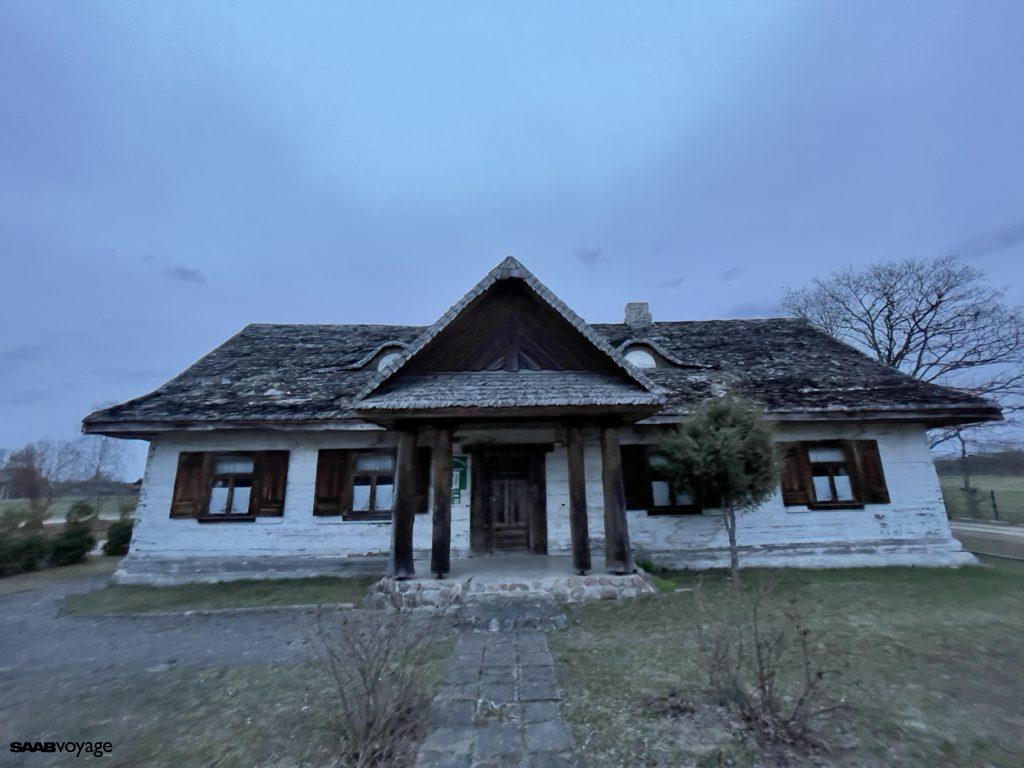
Orthodox church of St. Jacob in Łosinka
A church that is not blue! But it has a blue top of the tower and a blue onion. It was built at the end of the XIX century. Just enough for 5 minutes of watching, 3 photos and off we go.
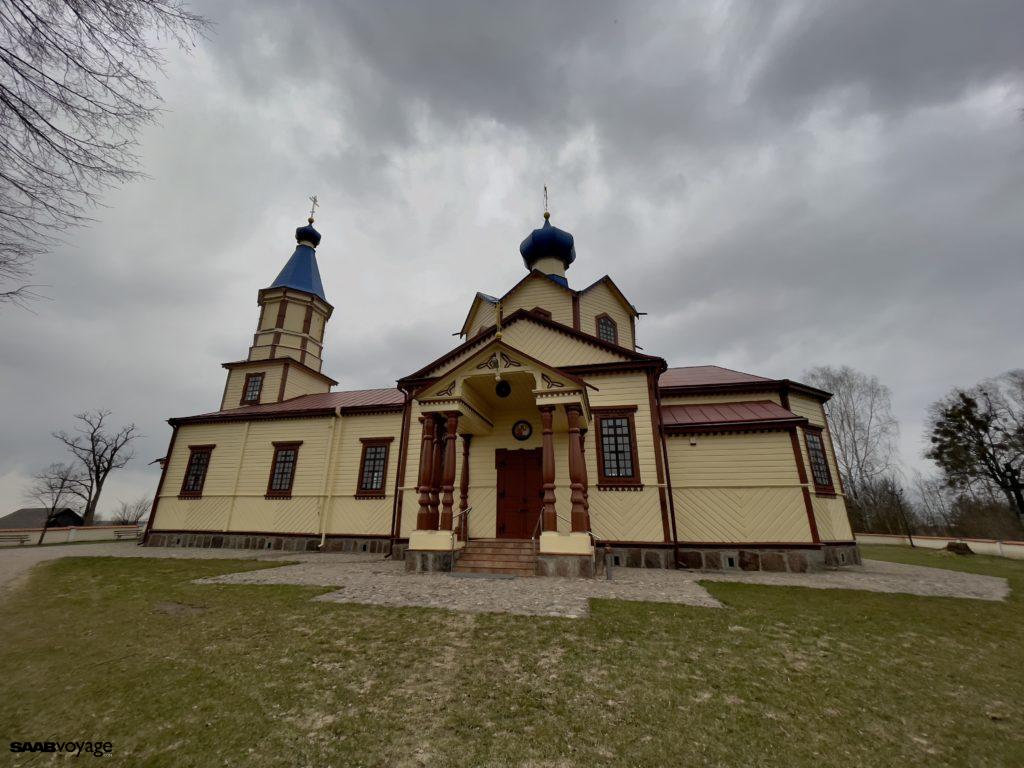
Orthodox church of the Elevation of the Holy Cross in Narew
The first Orthodox church in Narva was built in the first half of the 16th century. And then – as in the case of other churches in the area, the Union of Brest, the deterioration of the building, a new church (Uniate), a return to Orthodoxy, another church building. The current building dates from the late nineteenth century. In 1990, a fire destroyed the interior of the church, its current state is the result of careful reconstruction.
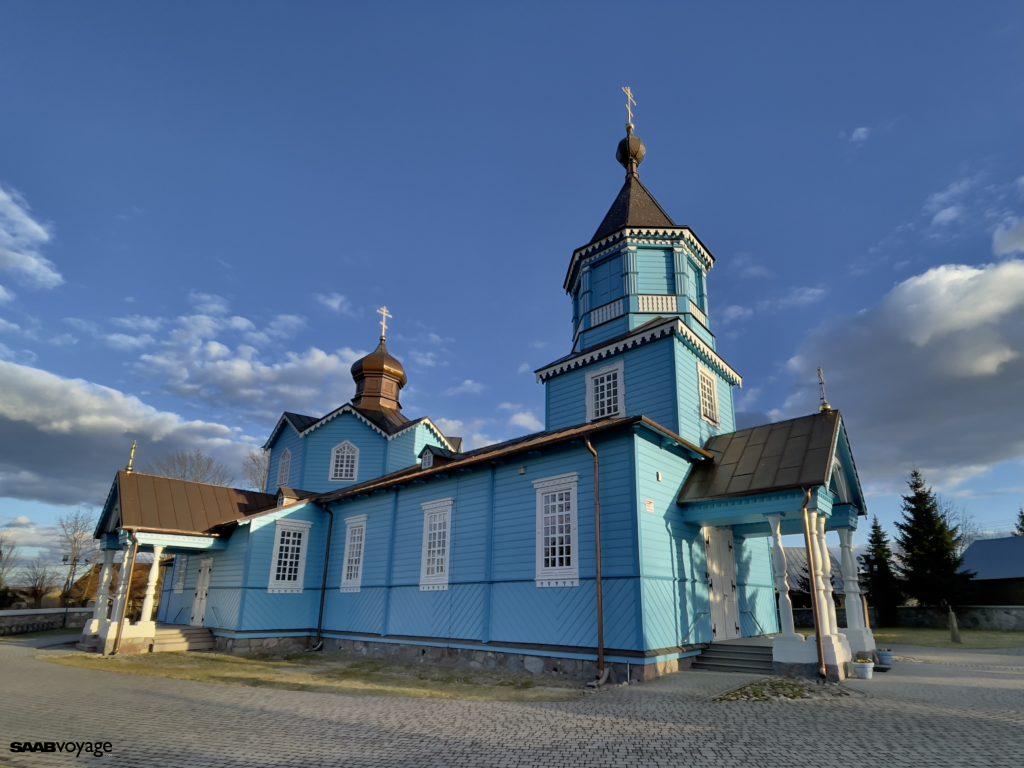
Orthodox church of St. Michael the Archangel in Trześcianka
A nice, green Orthodox church. It is more than 150 years old.
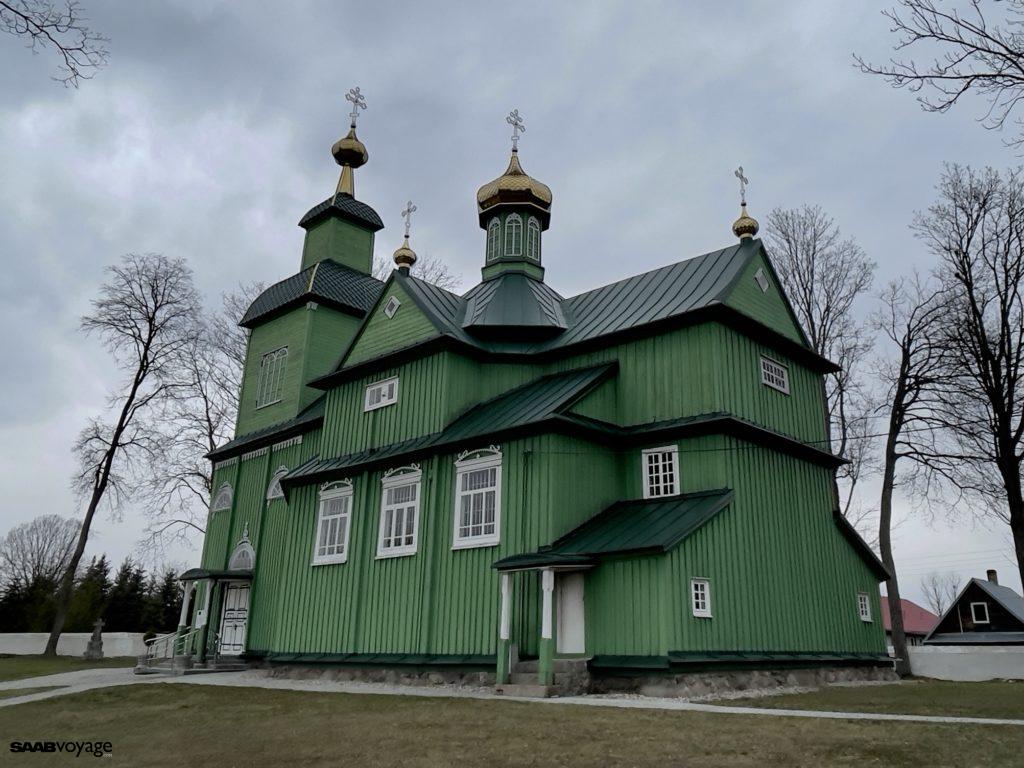
Orthodox Parish of the Protection of the Mother of God in Puchły
It is said to be the most beautiful Orthodox church in Podlasie. This is where we learned what the colours of the walls mean.
The icon of the Virgin Mary is associated with this place. And with the icon: two local legends.
An old man suffering from swollen legs lived under a linden tree on the hill where the church stands today. One day, while praying, he noticed an image of the Mother of God on the top of a tree, and soon his illness subsided. In memory of this event, the place was named Puchły, after the word swollen, which in the local dialect meant, among other things, swollen limbs.
The second legend says that the icon also appeared to the Orthodox inhabitants of the village, asking for protection from an aristocrat who wanted to force his subjects to convert to Greek Catholicism. Soon, the icon miraculously appeared on a linden tree as a sign that the Mother of God had answered their prayers, and the evil lord died. It is most likely his ghost that wanders in the area to this day.
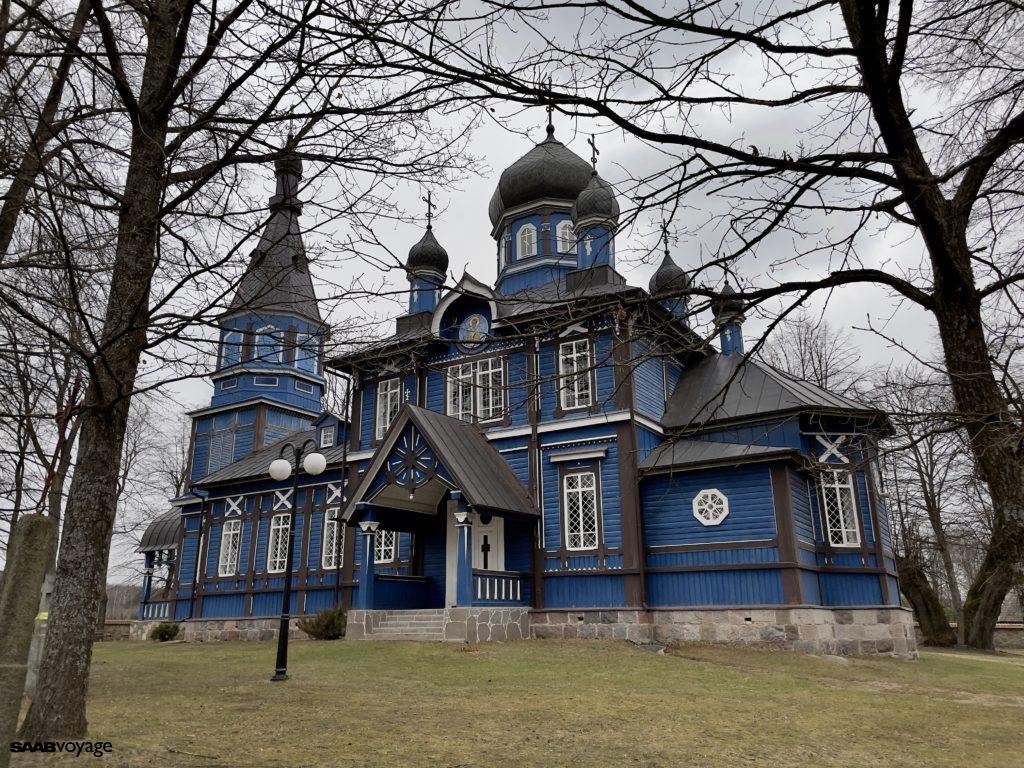
Skete of Saints Anthony and Theodosius Pechersk in Odrynki
Quite a fresh case. In 2008, the Council of Bishops elected Archimandrite Gabriel as Bishop of Gorlice. However, he did not accept the title, claiming that he was not worthy of it. So then he was also deprived of the function of the superior of the Supraśl monastery. Then Gabriel decided to create a skete – a hermitage – in Odrynki. He lived there until the end of his life and is buried there. Currently, (2021) three monks live there.
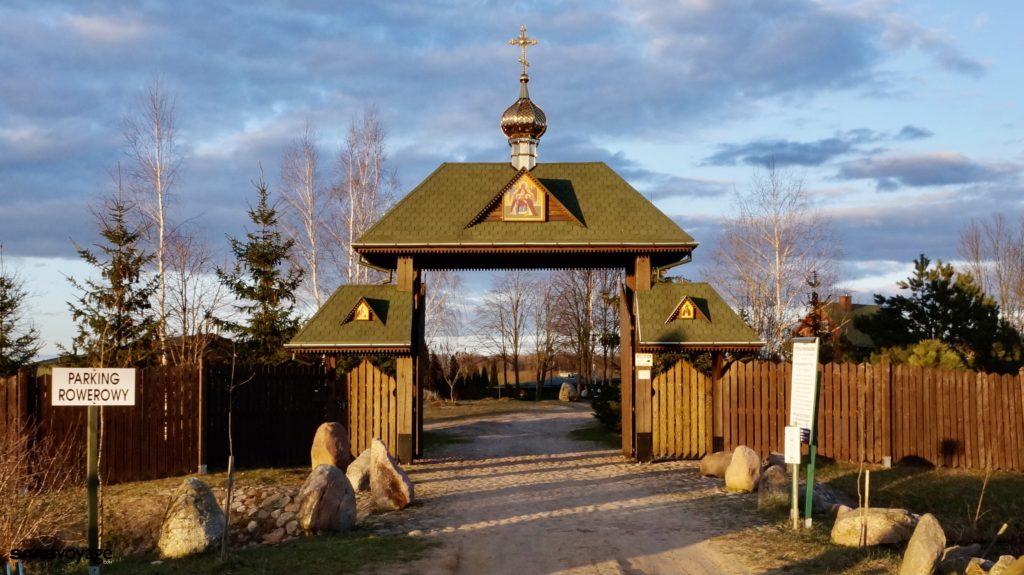
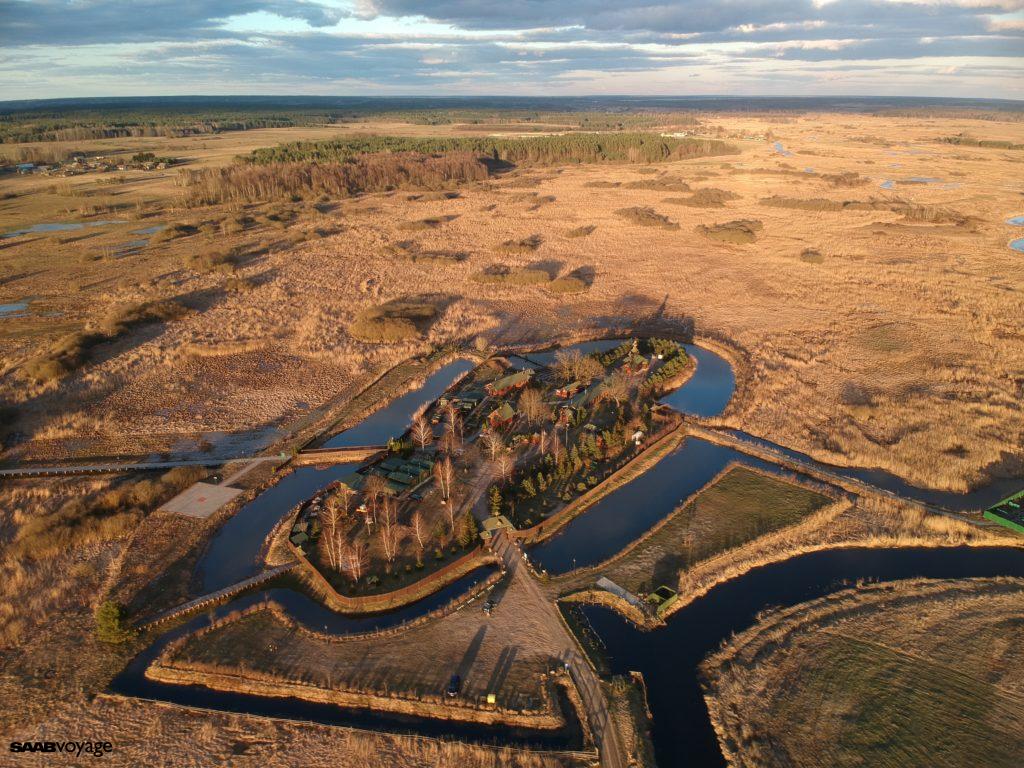
Bonus
Between Ryboły and Pawły we came across this architectural marvel. A real castle! Unfortunately, we did not manage to get an audience with His Majesty the King.
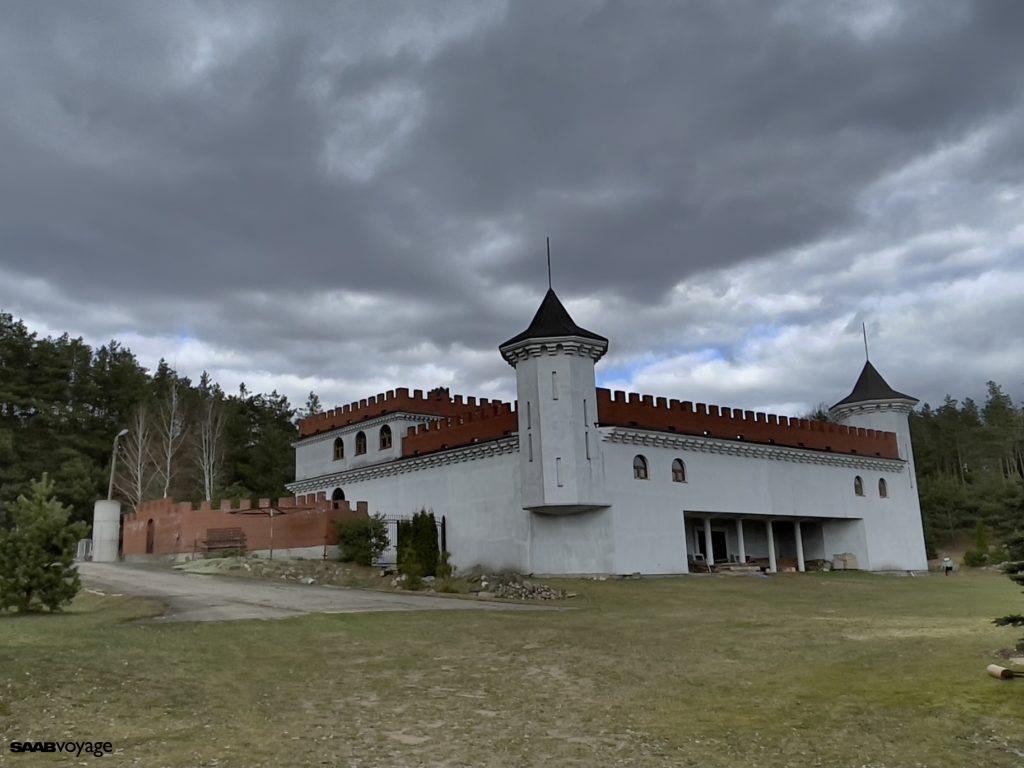
For those who persevere
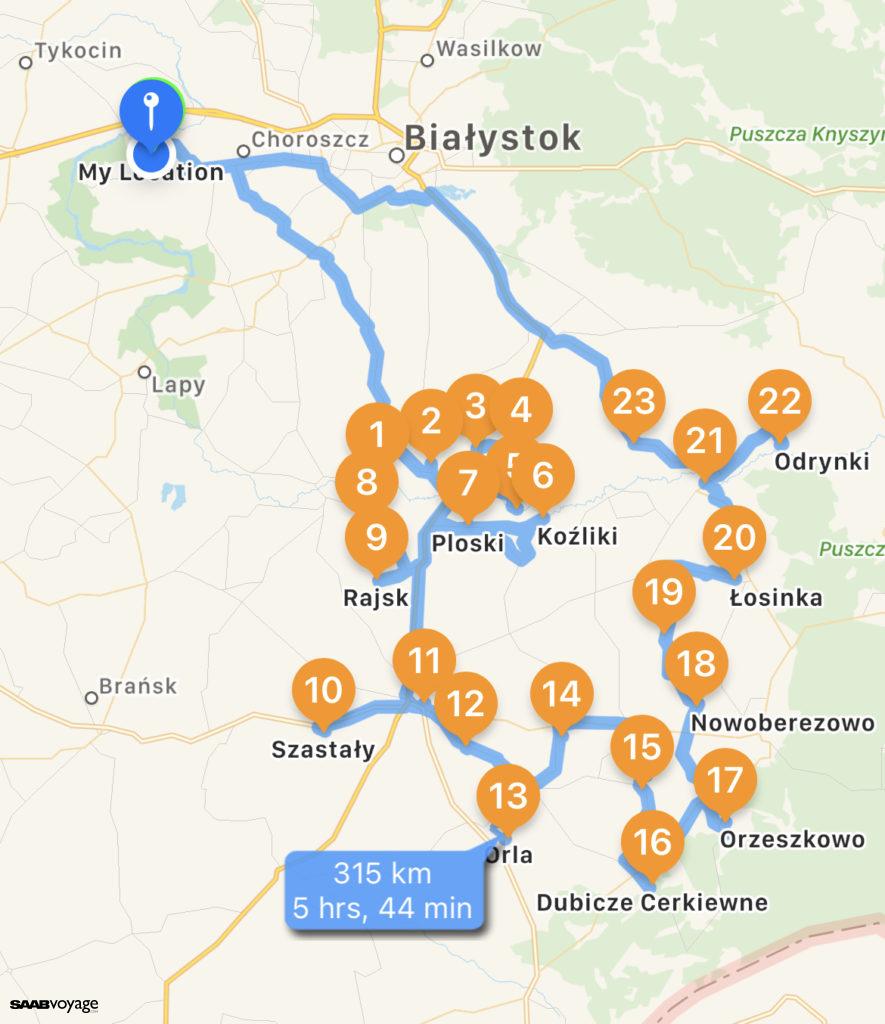
Here is the promised map containing our two-day route. If you want additional information on what and how, please let us know, e.g. in the comments.
…But that is not all! More notes about our trip to Podlasie will hatch here soon. Because there is still a lot to see here.
One Reply to “17 colourful Orthodox churches of Podlasie + bonus”